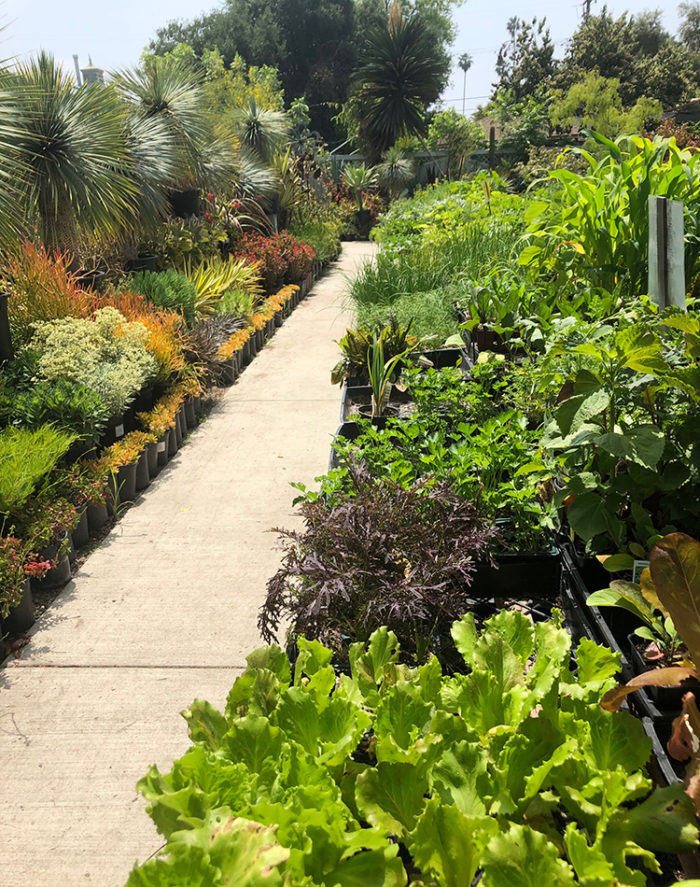
By midsummer you should be knee-deep in tomatoes, beans, zucchini, and peppers, so it can be hard to remind yourself to shop for seeds for your next season of vegetable gardening. However, July and August are the best time to get a start on fall and winter food gardening. In Southern California, some of the best months to grow veggies are in the fall and winter, when we have natural rainfall. It’s also a great time to grow greens, which often bolt now instead of producing in the spring and summer.
Starting vegetable seeds indoors or in covered containers outdoors in the shade is the best way to get new plants to germinate in the dry, hot weather. Once they have established a healthy root system and two to three sets of leaves, they can be moved outdoors. Plan to water every day or two for the first two weeks, since the dry Santa Ana winds can often blow through in September and October and dry out your new plants.
Here are four veggies I recommend to start from seed in August for fall and winter crops.
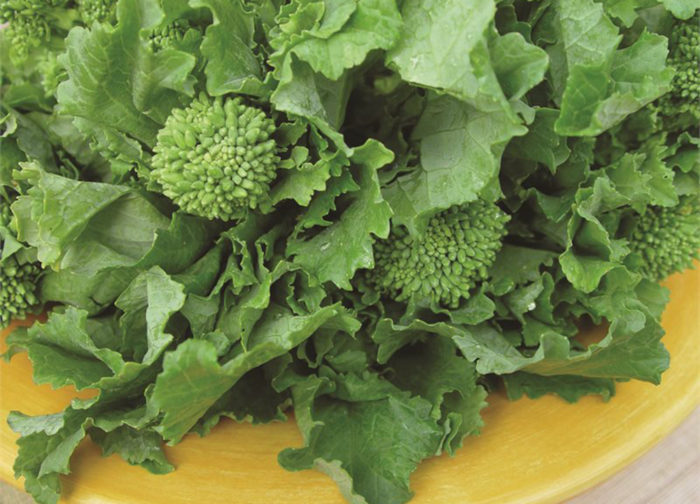
Broccoli rabe
Timing for broccoli is notoriously difficult in our warm climate; often it is just not cold enough to form a good head of broccoli or cauliflower. Broccoli rabe forms less of a compact head, so if it bolts on a warm weekend, it can still be harvested and eaten.
It is best to start broccoli and its relatives like cauliflower in August, so that they can be harvested in the coldest months of the year: December and January. Broccoli rabe germinates easily in a sunny window. An alternative option is to start seeds in flats outdoors in afternoon shade with a clear covering to keep in moisture. You can wait a few weeks for your plants to get tougher leaves and for a cooler day to plant out your broccoli rabe. Just make sure to water frequently for the first month of establishment.
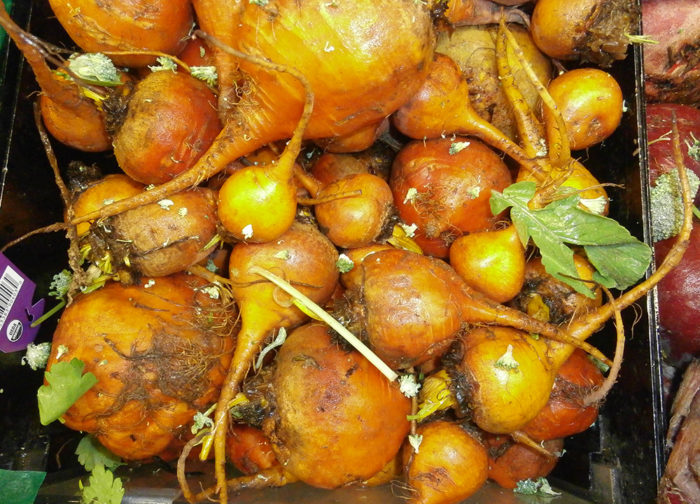
Golden beets
Beets and chard can be planted in the fall and winter for harvest from winter to spring. I love golden beets for their color in the fall garden as well as the fact that beets are multipurpose, as they can be harvested for their greens or their roots. Golden beets have less betalain, pigments responsible for the red color of the beets, which means they have a more subtle and delicate flavor. As an added benefit, golden beets will not stain your hands or the rest of your meal.
Start sowing your beets in August, at a depth about three times the size of the seed. Beets germinate very well, but if you plant extra seeds, you can enjoy an initial harvest of microgreens when you thin out the seedlings. Beets need to be transplanted early and gently when started indoors, or else they will not form a very large root for harvesting. Try to transplant before the roots have grown large, when the plant has two sets of leaves or fewer.
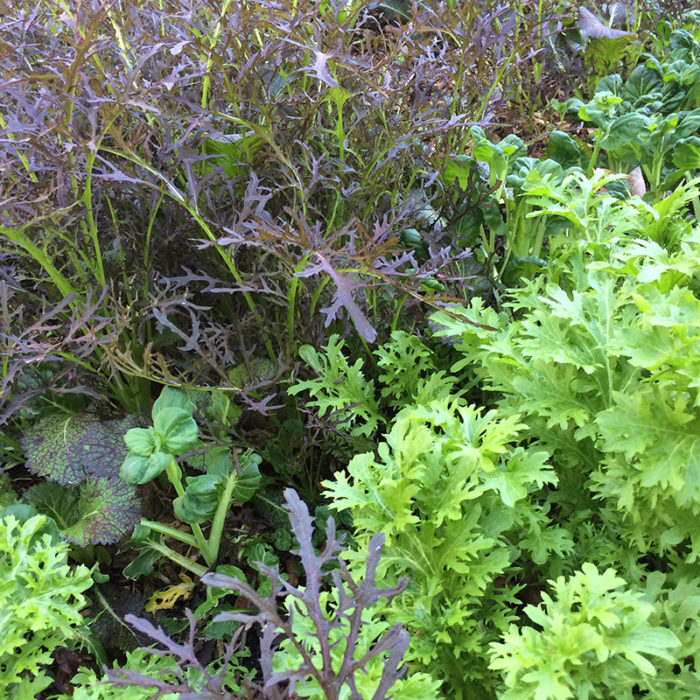
‘Red Leaf Mizuna’ mustard greens
Mustard greens are the workhorse of the fall veggie garden. They are colorful, wildlife resistant, and can often be harvested multiple times a season. I particularly like ‘Red Leaf Mizuna’ because it has both a deep red color and a lacey, fine texture that make it visually beautiful in the garden or in a salad.
Mustard can be started from August through February. Try mixing seeds from ‘Red Leaf Mizuna’ and a green variety such as ‘Golden Frill’, then plant a small number of seeds every few weeks to have available tender greens for salad and mature greens for cooking at the same time.
At the end of the season, make sure to remove your mustards’ flowers before they form seed, because mustard greens easily spread by seed and might escape into natural areas.
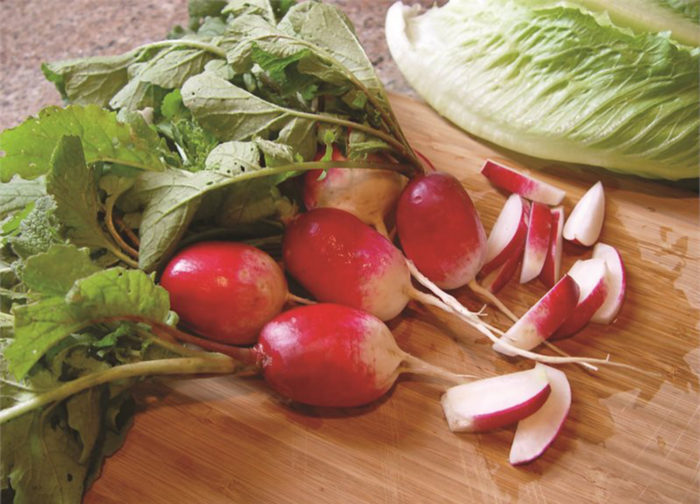
‘French Breakfast’ radish
Like mustard greens, radishes are tough and can handle the dry weather in the fall. I love the delicate flavor of the ‘French Breakfast’ radish.
Try mixing seeds from carrots with radish. I mix ‘French Breakfast’ radish seeds with ‘Parisienne’ carrot seeds and sow ten to fifteen seeds every two weeks from September to February. This spaces out harvesting over several months, rather than having a larger crop at one time.
Radishes are easy to start in a sunny window, but like beets they need to be transplanted carefully and early to ensure good root formation. Radishes are one of the few veggies that can successfully be germinated outdoors in the ground. Put them in part shade in August and September. They will germinate and mature very quickly. If you want to try germinating radishes outside in fall, plant them in a location with morning sun and afternoon shade, and water once or twice per day with a watering can. Later season plantings should be in full sun, since less light is available in the winter.
There are lots of other great crops for fall and winter, including parsley, fava beans, carrots, arugula, and butter lettuce, so start harvesting your summer crops and making room for your fall and winter veggies.
Rachel Young is the former Director of Horticulture and Garden Operations at Descanso Gardens in La Cañada, California.




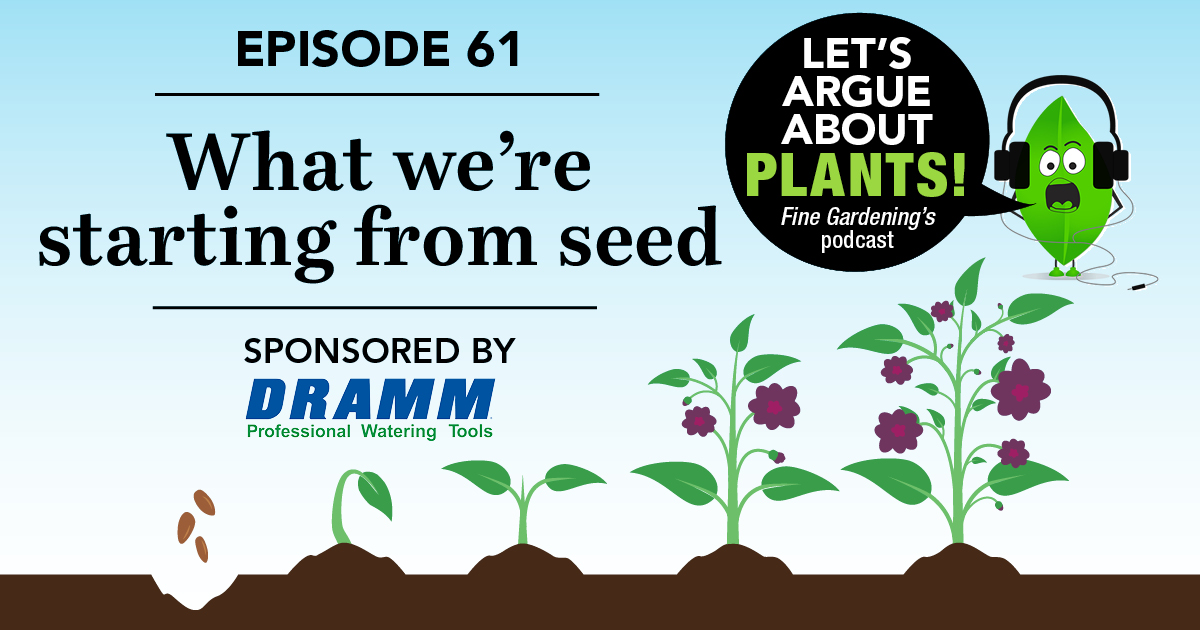













Comments
Log in or create an account to post a comment.
Sign up Log in